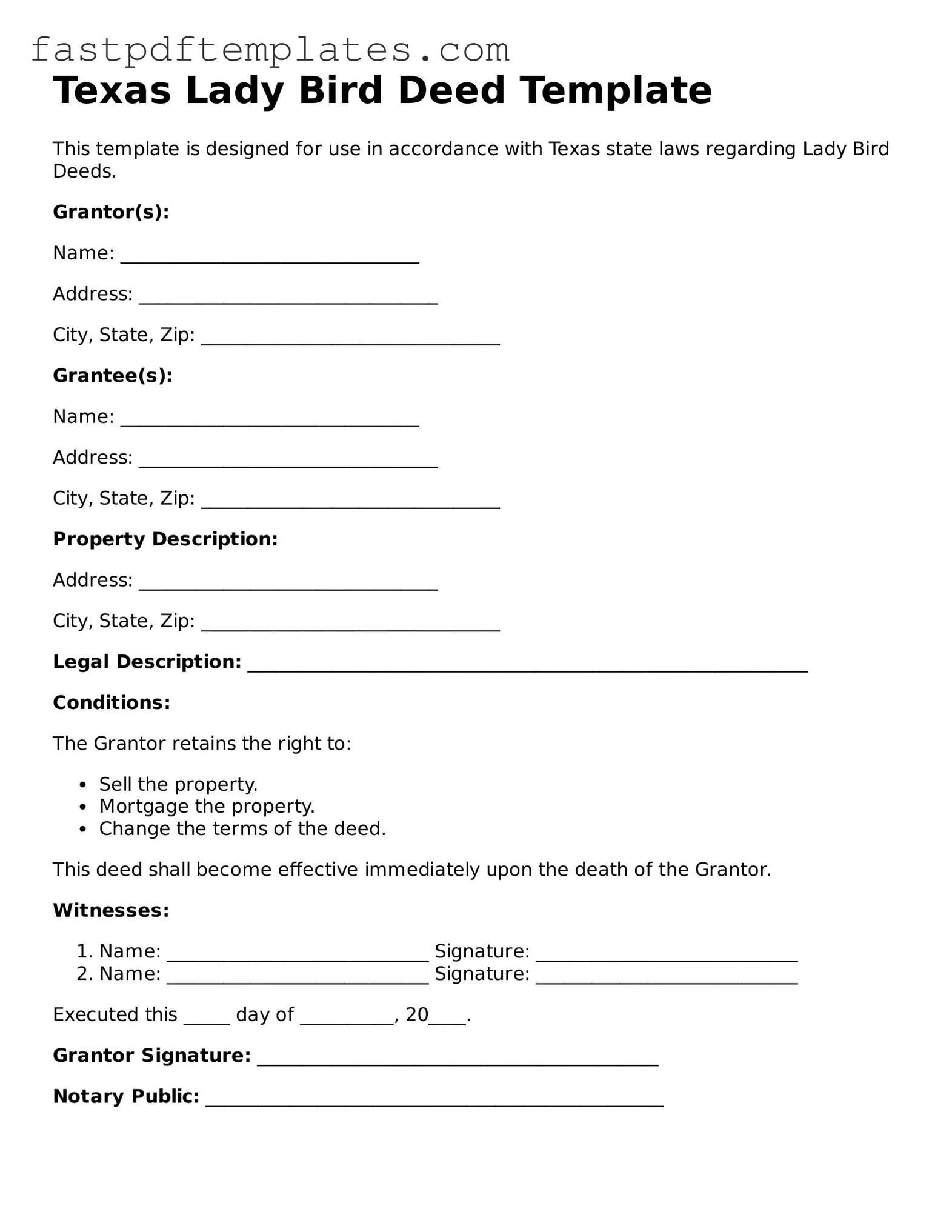Texas Lady Bird Deed Template
This template is designed for use in accordance with Texas state laws regarding Lady Bird Deeds.
Grantor(s):
Name: ________________________________
Address: ________________________________
City, State, Zip: ________________________________
Grantee(s):
Name: ________________________________
Address: ________________________________
City, State, Zip: ________________________________
Property Description:
Address: ________________________________
City, State, Zip: ________________________________
Legal Description: ____________________________________________________________
Conditions:
The Grantor retains the right to:
- Sell the property.
- Mortgage the property.
- Change the terms of the deed.
This deed shall become effective immediately upon the death of the Grantor.
Witnesses:
- Name: ____________________________ Signature: ____________________________
- Name: ____________________________ Signature: ____________________________
Executed this _____ day of __________, 20____.
Grantor Signature: ___________________________________________
Notary Public: _________________________________________________
